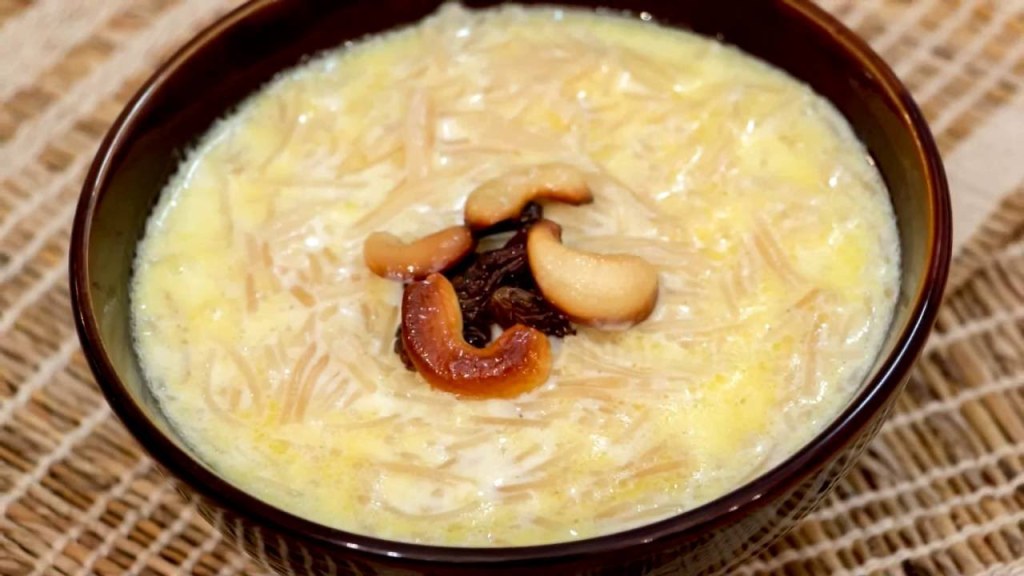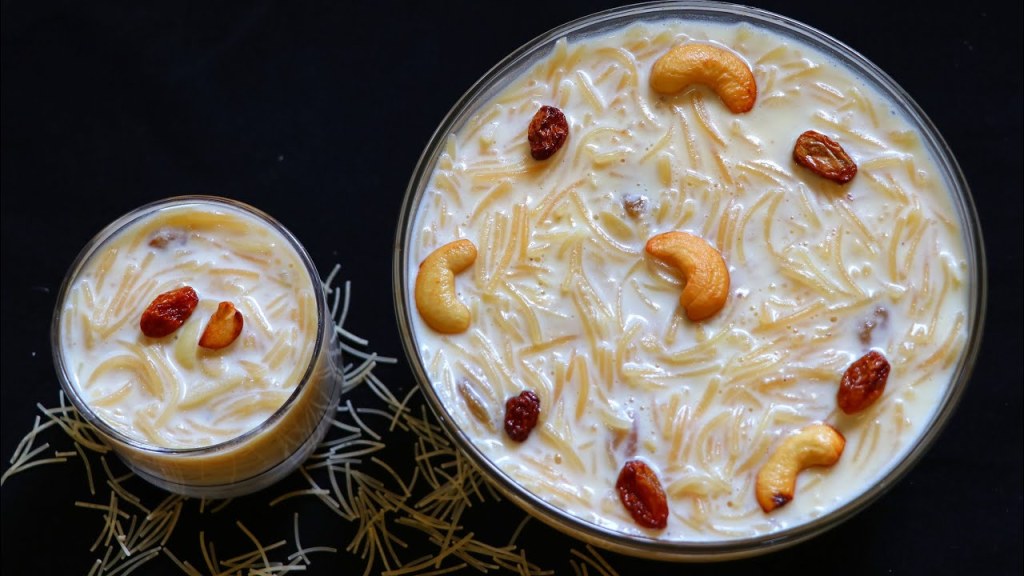Delicious Shavige Payasa Recipe: A Must-Try Dessert For Every Food Lover!
Shavige Payasa Recipe: A Delightful South Indian Dessert
Introduction
Dear Culinary Enthusiast,
2 Picture Gallery: Delicious Shavige Payasa Recipe: A Must-Try Dessert For Every Food Lover!


Welcome to another delicious recipe article! Today, we will take you on a culinary journey to Southern India with a delightful dessert called Shavige Payasa. This traditional dish is a popular choice during festivals, special occasions, or simply as a sweet treat after a meal. In this article, we will explore the history, ingredients, preparation, serving suggestions, and more about this mouthwatering dessert. So, grab your apron and get ready to indulge in the flavors of Shavige Payasa.
What is Shavige Payasa?

Image Source: ytimg.com
Shavige Payasa, also known as Vermicelli Kheer, is a sweet dish made with roasted vermicelli, ghee, milk, sugar, and flavored with cardamom and nuts. This creamy dessert has a rich and comforting taste that will leave you craving for more. Whether you are a fan of Indian cuisine or simply love exploring new flavors, Shavige Payasa is a must-try dessert that will enchant your taste buds.
Who Invented Shavige Payasa and When?
The origins of Shavige Payasa can be traced back to the southern regions of India, particularly Karnataka and Kerala. This dessert has been a part of the traditional cuisine for many generations, with each family adding their own unique touch to the recipe. While the exact date of its invention is unknown, Shavige Payasa has been cherished and enjoyed by families for countless years, making it a beloved dessert in the region.
Where Can You Find Shavige Payasa?

Image Source: ytimg.com
Shavige Payasa is commonly found in homes, restaurants, and sweet shops across Karnataka and Kerala. It is often prepared during festivals like Navratri, Diwali, and Pongal, where it is served as a special treat to celebrate the occasion. Additionally, you can find variations of this dessert in other parts of India and even in some Indian restaurants around the world.
Why Should You Try Shavige Payasa?
Shavige Payasa is a dessert that encapsulates the flavors and essence of Indian cuisine. Its creamy texture, aromatic cardamom, and crunchy nuts create a harmonious blend of tastes and textures that will transport your taste buds to culinary heaven. Whether you have a sweet tooth or simply want to indulge in a comforting dessert, Shavige Payasa is the perfect choice that will leave you satisfied and craving for more.
Ingredients
To prepare Shavige Payasa, you will need the following ingredients:
1 cup roasted vermicelli
2 tablespoons ghee (clarified butter)
4 cups milk
1 cup sugar
1/2 teaspoon cardamom powder
A handful of cashews and raisins
A pinch of saffron strands (optional)
Instructions
Follow these steps to prepare the delicious Shavige Payasa:
Heat ghee in a pan and roast the cashews and raisins until golden brown. Set them aside.
In the same pan, roast the vermicelli until it turns golden brown. Keep stirring to ensure even browning.
In a separate pot, bring the milk to a boil.
Add the roasted vermicelli to the boiling milk and cook on medium heat until the vermicelli becomes soft and the mixture thickens.
Add the sugar, cardamom powder, saffron strands, and roasted cashews and raisins. Stir well to combine.
Simmer the mixture for a few more minutes until the flavors meld together.
Remove from heat and let it cool for a while. Garnish with additional nuts if desired.
Serve the Shavige Payasa warm or chilled, according to your preference.
Serving Suggestions
Here are a few serving suggestions for your Shavige Payasa:
Enjoy it as a standalone dessert, served in bowls or cups.
Pair it with traditional Indian sweets like Gulab Jamun or Jalebi for a delightful combination of flavors.
Serve it as a dessert alongside a festive meal or during special occasions.
Techniques and Tips
Here are some techniques and tips to enhance your Shavige Payasa:
Roasting the vermicelli in ghee adds a nutty flavor to the dessert. Make sure to keep stirring to prevent it from burning.
You can adjust the sugar according to your taste preferences. Add more if you prefer a sweeter dessert or reduce it for a less sweet version.
For a richer flavor, you can substitute some of the regular milk with condensed milk.
Frequently Asked Questions (FAQs)
1. Can I use whole wheat vermicelli instead of the roasted variety?
Yes, you can use whole wheat vermicelli if you prefer a healthier option. However, the roasted vermicelli adds a distinct flavor and texture to the dish.
2. Can I use almond or soy milk instead of regular milk?
Yes, you can use almond or soy milk as a substitute for regular milk. However, keep in mind that it may alter the taste and texture of the final dish.
3. Can I add other nuts to the Shavige Payasa?
Absolutely! You can experiment with different nuts like almonds, pistachios, or walnuts to add a personal touch to your dessert.
4. How long will Shavige Payasa stay fresh?
If stored in an airtight container in the refrigerator, Shavige Payasa can stay fresh for up to 2-3 days.
5. Can I make a vegan version of Shavige Payasa?
Yes, you can make a vegan version of Shavige Payasa by using plant-based milk, such as almond or soy milk, and substituting ghee with coconut oil or vegan butter.
Conclusion
Shavige Payasa is a delightful South Indian dessert that captures the essence of Indian cuisine. Its creamy texture, aromatic flavors, and crunchy nuts make it a perfect choice for any occasion. Now that you have learned about the history, ingredients, preparation, and serving suggestions of Shavige Payasa, it’s time to put on your apron and try this delicious dessert yourself. Prepare it with love, share it with your loved ones, and savor every spoonful of this traditional delight. Happy cooking!
Note: The nutritional information provided is an estimate and may vary based on the ingredients and serving size.
Final Remarks
Disclaimer: The recipes and information provided in this article are meant for educational purposes only. It is always recommended to consult a professional chef or nutritionist for specific dietary needs or concerns. The author and publisher of this article are not responsible for any adverse effects or consequences resulting from the use of any suggestions or recipes herein.
This post topic: Recipe
